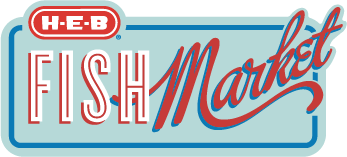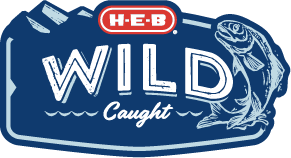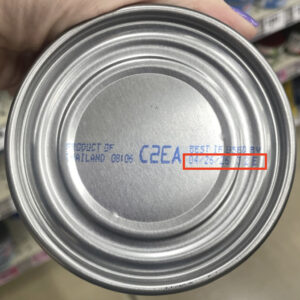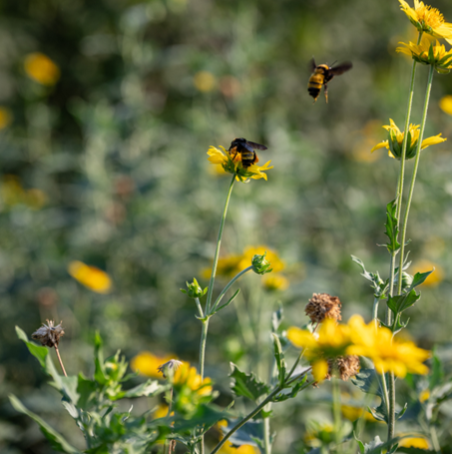Our Oceans, Our Future: Sustainable Seafood at H-E-B
At H-E-B, we make putting delicious, sustainable seafood on the family table easy for all Texans.
This is the number one reason why seafood at HEB, whether fresh, frozen, prepared, shelf-stable (e.g., canned), and in our sushi, comes from safe, responsible suppliers focused on quality and environmental stewardship from the source to your plate.

Our Sustainable Seafood Program
Our industry-leading sustainable seafood program is developed with FishWise: Together, we’re working to bring transparency and traceability to a complex global food chain, with innovative, science-based tools committed to the health of our oceans, lakes, and rivers.
Farmed Seafood
Aquaculture, a farming practice for fish and shellfish, now accounts for more than half of all global seafood produced. U.S. Aquaculture can be an environmentally-responsible source of food, helping to create healthier habitats, and is used to rebuild stocks of threatened or endangered species1. H-E-B’s standard for farmed seafood is that it comes from a certified Safe Water Ecosystem (ongoing water testing, environmental surveying and animal welfare monitoring) and all imported products are third-party certified as sustainable by the Global Aquaculture Alliance, Aquaculture Stewardship Council, or organic as defined by the European Union.



Our Sustainable Seafood Program
Our industry-leading sustainable seafood program is developed with FishWise: Together, we’re working to bring transparency and traceability to a complex global food chain, with innovative, science-based tools committed to the health of our oceans, lakes, and rivers.

We continuously monitor our program to make sure it benefits the environment, our seafood suppliers, and our fellow Texans, supporting:
- High environmental standards
- Social accountability for labor & human rights
- Traceable, transparent and legal supply chains to ensure quality and safety for you and seafood industry workers
- The long-term health of species populations and ecosystems
Our H-E-B Seafood Brands



With four seafood brands to choose from, you’ll always find a delicious selection at your H-E-B:
- H-E-B Wild Caught seafood: Sustainably sourced from pristine open waters
- H-E-B Responsibly Raised seafood: Raised using without growth hormones or antibiotics
- H-E-B Organic seafood: Raised with an organic diet and E.U. organic farming standards
- H-E-B Fish Market seafood: Seafood sourced from suppliers who sign H-E-B’s Sustainability Promise and uphold our traceability and environmental standards
Where Seafood at H-E-B Comes From
The sustainable seafood at your H-E-B is from both farm-raised and wild-caught sources that is harvested or produced in ways that protect the long-term health of species populations and ecosystems (1), respect human and labor rights, and comes from transparent, traceable and legal supply chains.
Fish & shellfish farming (aquaculture) produces over half of all the seafood we eat. It can be an environmentally responsible source of food for Texans, helping create healthier seafood habitats and rebuild threatened or endangered species (2). None of our farmed seafood is genetically modified nor uses added growth hormones (per federal regulations).
Our commitment is that our seafood meets one or more of the following criteria:
- Comes from a GSSI benchmarked certified fishery or farm
- Is Green or Yellow rated by Monterey Bay Aquarium’s Seafood Watch Program
- Green: Abundant, well-managed fishery. Environmentally friendly catch methods.
- Yellow: Some concerns with abundance, catch methods, or fishery management.
- Comes from a credible Fishery Improvement Project (FIP) demonstrating progress (3)
Responsibility & Traceability: Our Seafood Supplier Requirements
At H-E-B, we only purchase seafood from suppliers who operate transparently with us. They play a collaborative, critical role in delivering high quality, sustainable seafood to our customers. To work with us, they must:
- Adhere to our Supplier Code of Conduct, which has strict guidelines on social responsibility
- Follow our Seafood Supplier Sign-Off and Special Requirements for Seafood
- Report supply chain traceability data with every purchase order
- Participate in supply chain verification activities upon request
We are aware of how the industry intersects with human rights and social responsibility, and we are committed to working with our supply chain partners to combat abuses. Before we partner with a supplier, we investigate how they treat their workers at every stage of the supply chain and remove all that are not compliant at any point in our partnership. We also use supply chain data and trusted resources (e.g. Trafficking in Persons (TIP) reporting through the State Department) to identify higher-risk sources and allocate resources to help preserve the integrity of our program.
Our Locally Sourced Seafood Standards
As part of our Texas-first sourcing commitment, we offer you sustainable seafood from Texas and the Gulf whenever possible. In addition, we partner with select local fisheries & farms without applicable ratings & certifications on a case-by-case basis. To work with H-E-B, they must be members of a U.S. State Fisheries Management Program, or have permits from Texas Parks & Wildlife (TPW) and the Texas Commission on Environmental Quality (TCEQ). H-E-B also partners with the Environmental Defense Fund (EDF) to better understand Texas’ unique ecosystems
As proud Texans, we partner with local organizations like Friends of RGV Reef to build red snapper reefs off South Padre Island to help increase fish populations. Together, we’ve built the first industrial scale artificial nursery reef in the world!
H-E-B also works with sustainable suppliers, like Jeri’s Oysters, who replenish reefs in Galveston Bay. Jeri’s Oysters recycles 100% of their shells back to their reefs, allowing them to grow more than 70% of their harvest every year.
Our Sustainable Tuna Standards
We recognize the higher-risk nature of tuna supply chains. As a member of the Global Tuna Alliance (GTA), the preeminent sustainable tuna organization in the world, H-E-B preferentially sources tuna that aligns with the GTA’s Five-Year Strategy for improving traceability and transparency, environmental sustainability, and social responsibility. This includes requiring tuna suppliers to provide data around vessel identification and tracking, including: vessel names, vessel identification numbers such as International Maritime Organization (IMO) numbers, and transshipment events.
Tuna harvesting and at-sea transshipment–the transfer of fish, supplies, or other cargo between vessels at sea–often occur in remote locations where monitoring and oversight are minimal, making workers particularly vulnerable to human rights and labor abuses.
We work with FishWise and our suppliers to identify and implement best practices. We recommend the following to improve the transparency of tuna harvesting and at-sea transshipment:
Monitoring & Oversight:
- Authorization by relevant Regional Fisheries Management Organizations (RFMOs)
- Appropriate record-keeping
- Monitoring by human or electronic observer(s)(4)
Transparency
- Provide harvest and at-sea transshipment documents upon request
- Documents may include: post-activity declarations, authorization to fish or transship in RFMO waters, proof of monitoring, and/or proof of worker protection processes
Worker Protections
- Adherence to all national and international regulations4 related to vessel and crew safety and worker protections
- Prioritize suppliers with the highest level of protection for workers
- Protections may include: time spent at sea, vessel safety inspections, training and equipment for crew injuries, and protections for observers
Tuna: Trace My Catch
Many H-E-B brand shelf-stable fish products have Trace My Catch codes on their packaging to show where it came from! Our shelf-stable real wood-smoked tuna is also sourced from MSC-certified fisheries. Shop these delicious varieties at your H-E-B today, then enter the product code on the can or pouch to see where your tuna was caught

Our American Lobster Standards
In support of this historic domestic fishery in the U.S., H-E-B looks for meaningful opportunities to aid improvements in this industry, and, when available, prioritize sourcing from fishery improvement projects and/or American lobster caught with ropeless gear
How Does H-E-B Support Seafood Traceability, Verification, and Transparency?
We’re committed to knowing not just where our seafood products came from, but:
- How they are produced
- By whom
- How they get to our stores
That’s why we use the third-party seafood traceability platform Trace Register. All our suppliers are required to report data aligned to the Global Dialogue on Seafood Traceability (GDST) with every purchase order. (6)
This seafood supply chain data is used to:
- Check suppliers’ compliance
- Support risk identification
- Counter (Illegal, Unreported, or Unregulated) fishing activity
- Perform due diligence verification activities
We regularly update our sourcing grid and continually work towards full visibility of the origin and journey of our products, promoting transparency across our seafood supply chains.
How does H-E-B Maintain its Sustainable Seafood Program?

This plan upholds and continuously improves our seafood program and meets current international best practices, incorporating environmental, labor, and human rights.
These are the current international standards we follow:
Due Diligence Steps
Create policies and commitments addressing environmental, labor, and human rights that are embedded into company strategy, operations, and culture.
Collect data and information to support the assessment, identification, and prioritization of risk. Track, monitor, and verify progress towards commitments and policies.
Interact and collaborate with suppliers and peers.
Advocate for management improvements at all levels of the supply chain.
Upon risk identification, take timely and appropriate action to mitigate, prevent, cease, and remediate where necessary. Develop internal processes to enable prompt and effective responses.
Communicate seafood sustainability efforts both internally and externally. Use findings and lessons learned to inform iterations of this plan and continually progress toward goals and objectives.
International standards referenced: OECD Due Diligence Guidance for Responsible Businesses, United Nations Guiding Principles on Business and Human Rights,and Conservation Alliance for Seafood Solutions Guidance for Companies on Environmentally and Socially Responsible Seafood.
What’s Next?
When you shop for seafood at H-E-B, know that we take sustainability seriously.
The fish, shellfish, people, and ecosystems involved in the production of H-E-B’s sustainable seafood initiatives are treated with the respect and care they deserve. Looking ahead, we’ll continue to elevate our seafood welfare and sustainability standards, leading the way in improving quality of life for the entire food chain.
Want more? Watch our short documentary film about the remarkable recovery of Redfish, “Redfish Revival,” from the H-E-B Presents: An Our Texas, Our Future film series
Sources:
[1] National Oceanic and Atmospheric Administration
[2] National Oceanic and Atmospheric Administration
[3] Fishery improvement projects (FIPs) must follow the Conservation Alliance for Seafood Solutions FIP Guidelines, be at “Stage 3 – Implementation,” have a progress rating of “C” or higher, and regularly report progress on FisheryProgress.org. Aquaculture improvement projects are less common and will be reviewed on a case-by-case basis in partnership with FishWise.
(4) Electronic monitoring on fishing and transshipment vessels involves using various technologies to track, record, and manage fishing activities. Examples include, but are not limited to: VMS, AIS, electronic reporting systems such as digital logbooks, electronic monitoring cameras, satellite tracking, and RFID tags.
(5) International frameworks and standards that should be used include the International Labour Organization Work in Fishing Convention, 2007 (C.188), the International Maritime Organization Cape Town Agreement, and the International Convention on Standards of Training, Certification and Watchkeeping for Fishing Vessel Personnel (STCW-F).
(6) Detailed information about our requirements of seafood suppliers, including required key data elements, can be found in our Seafood Supplier Sign-Off document.


